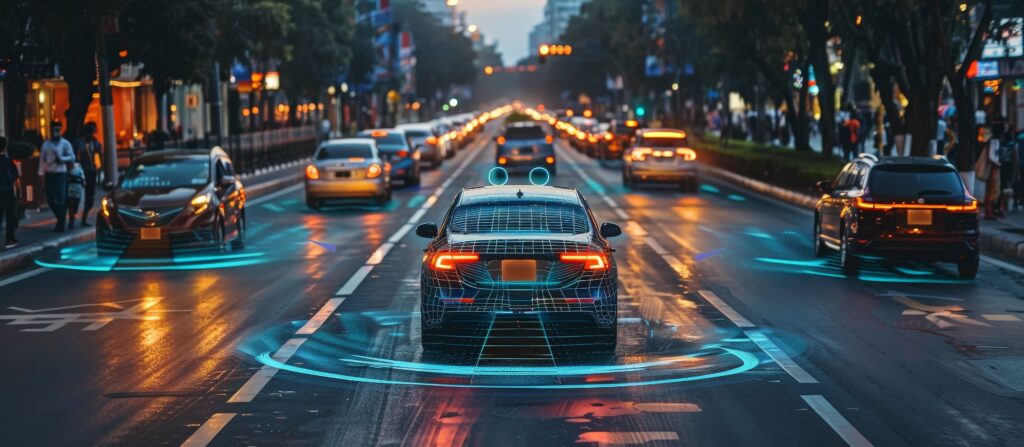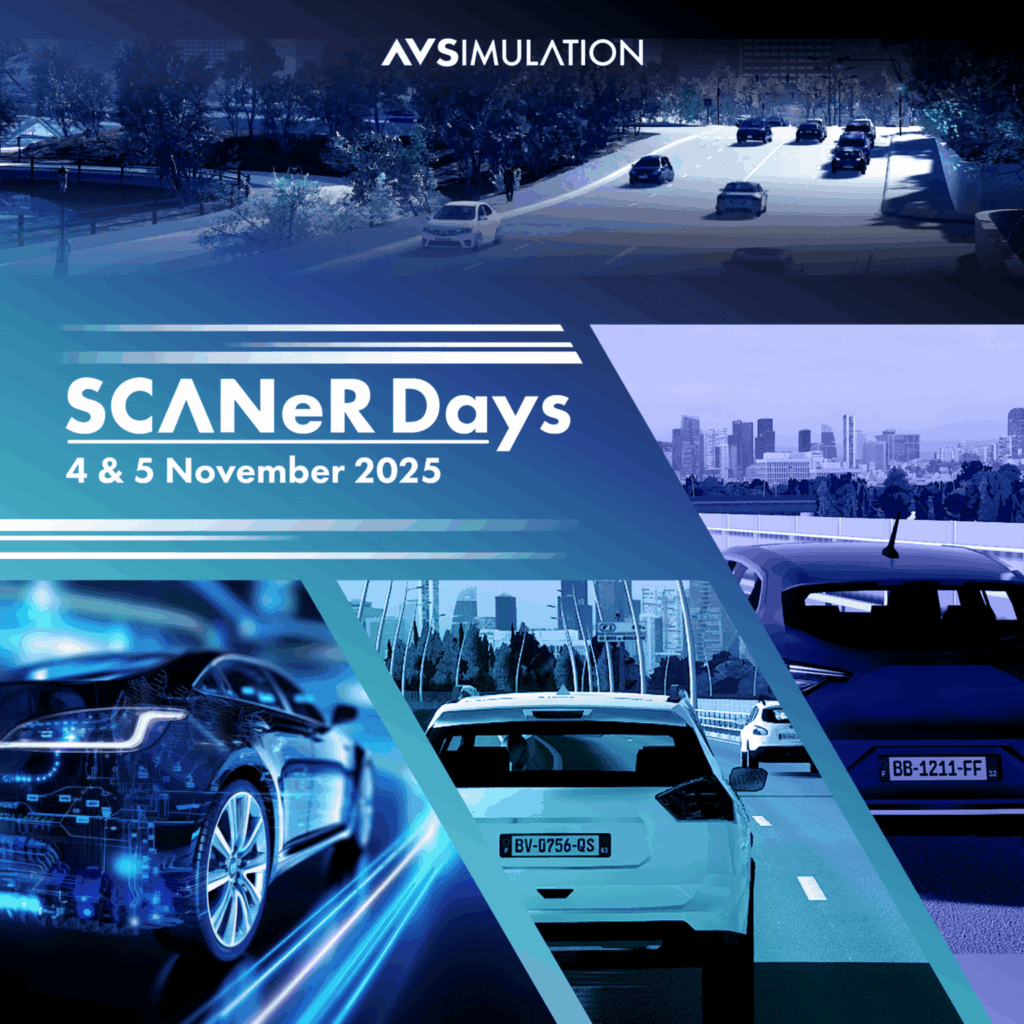CHALLENGE
Make driving simulation the AD/ADAS design and validation tool.
SOLUTION
Use the aperture and modularity of the SCANeR platform to build a continuous chain of testing and validation tools.
DESCRIPTION
When Renault decided to use driving simulation not as a validation tool but as a design tool, it was necessary to make a choice. The tool had to be open, modular, capable of supporting the ramp-up, and usable throughout the development cycle. For example, modularity is not optional, for historical reasons, Renault uses its own vehicle dynamics model. It was therefore necessary to be able to ‘unplug’ the simulator’s dynamics model and replace it with another. With this in mind, after studying the market, Renault decided to turn to AVSimulation, its SCANeR simulation platform and its driving simulators.
In addition to using the software to define the functional architecture, the functions of the system under test, and the expected outcomes at the end of the process, the essential element of these tests is the ecosystem in which they are carried out. The test plan also cannot start without a defined ecosystem, which varies depending on the stage of the design cycle. During testing, SCANeR creates and combines different scenarios. A scenario essentially consists of a specific situation (such as a motorway entrance, emergency braking, or overtaking) and approximately one kilometre of road. By combining different scenarios, more complex situations can be created, allowing the study of vehicle behaviour in a more realistic environment.
During simulations, if any of the expected criteria are not met, one or more alarms are triggered. These alarms highlight scenarios where issues have occurred, such as excessive braking distance or the vehicle unintentionally leaving its lane. The results are then analyzed, the electronic assistance behaviour adjusted and the simulation replayed. Once this simulation-correction-replay phase gives satisfaction, the driver is reintroduced into the loop. It is then necessary to verify on a driving simulator that the system’s behaviour meets the driver’s expectations, both in terms of response and ergonomic acceptability of the system. The ability to use the same SCANeR platform on both a driving simulator and a large-scale simulation platform is, in this context, a key factor.
Indeed, in order to accelerate the simulation-correction-replay cycle, SCANeR runs on a massive simulation platform. This is one of the advantages of the SCANeR platform: it is “HPC ready” and is, among other things, compatible with Microsoft’s Azure cloud.
BENEFITS OF SCANeR
Finally, it may be useful to revisit two key advantages of SCANeR that contribute significantly to achieving economies of scale.
- First, the fact that the SCANeR platform encourages the use and reuse of the same scenarios at different stages of the V-cycle, in different ecosystems (MIL, HIL, VIL…) and on various execution platforms (cloud or driving simulator) allows to invest and capitalize on a catalog of scenarios.
- Second, the fact that the SCANeR platform is truly open makes it easy to connect to other environments and/or to co-simulate easily.
The process set up around SCANeR allows Renault to complete 500,000 virtual kilometers per day, and 10 million virtual kilometres in 21 days. Simulation enables activities that were previously impossible.
“SCANeR ensures not only continuity throughout the V-cycle, but also allows scenarios to be unrolled on a massive simulation platform (HPC) or on a driving simulator.””
CONCLUSION
Renault places the customer at the heart of its strategy, making their satisfaction a top priority. In this context, driving simulation using a simulator enables the user to be directly involved in the design and validation of the vehicle’s various systems: does he understand them? do they have any special value in his eyes? Are they well accepted, well used?…
The collection of data that is representative of reality is of crucial importance. Indeed, a system that is not understood by the driver, is not used and it automatically loses its value. In addition, we are heading towards the inflection point where semi-autonomous vehicles will become 100% autonomous. In this context, the study of user behaviour and acceptance is part of the keys to a smooth transition.
NEXT STEPS
- Implement SCANeR’s execution capabilities in cloud and HPC environments.
The goals are multiple: generating and unrolling as many scenarios as possible to cover as many kilometres as possible in a minimum of time. Ensuring the reproducibility of the tests, efficiently manage the data generated so that we can return to the teams in-house and robust our designs.




